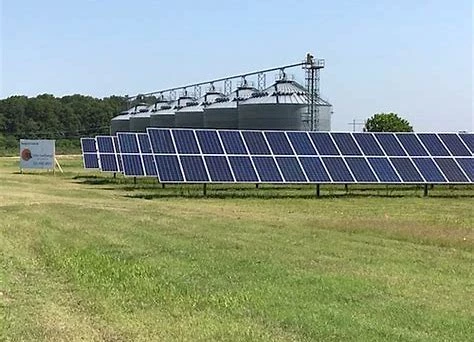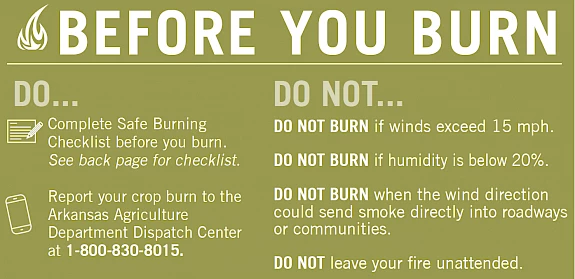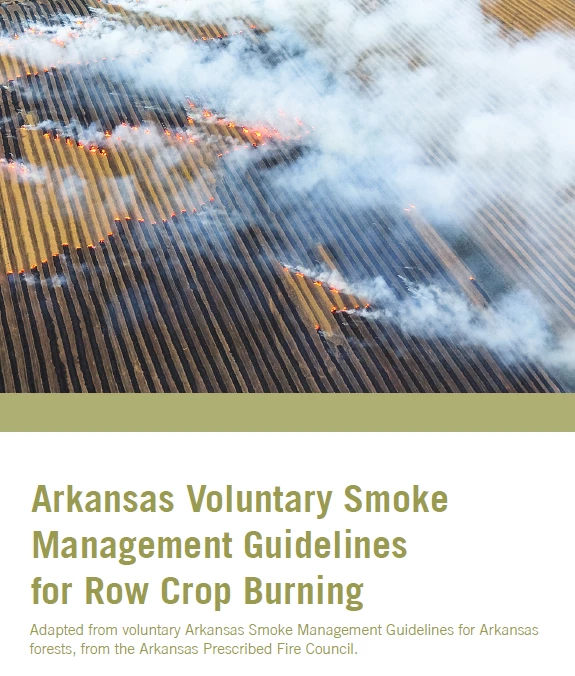Clean air is just as important for plants as it is for humans, and Arkansas farmers strive to play a key role in sequestering carbon and mitigating emissions from their farm operations. In addition, we have worked to develop a voluntary smoke management plan for Arkansas farmers to ensure that the practice of post harvest crop residue burning is done in the most environmentally sensitive manner possible. We also support the continued development of solar power in Arkansas, especially on farms and in rural communities, and we promote the use of various government incentives to convert marginal farmland to restored wetlands and forests.
Resources
GHG Mitigation & Carbon Markets:
Arkansas farmers not only constantly strive to reduce their own greenhouse gas emissions, they also understand their role in pulling carbon out of the atmosphere and putting it back into earth. In addition, Arkansas farmers are interested in participating in emerging marketplaces that could incentivize practices to sequester carbon, or otherwise reduce greenhouse gases in the environment. In addition to carbon markets and other efforts to reduce greenhouse gas emissions, Arkansas farmers continue to explore and experiment with new growing methods that may reduce other greenhouse gases.
While these types of markets are not fully commercially available, there are some opportunities farmers are exploring, and we remain hopeful that more will emerge. We support such markets provided they are voluntary and appropriately compensate farmers.
Solar Power:
Another way Arkansas farmers and agriculture businesses are looking to reduce greenhouse gas emissions is by utilizing renewable energy sources for power, and solar power is currently leading the charge with the help of more affordable equipment, tax incentives, loan and grant programs, and other incentives for sharing generated power with utility companies to help them lower their own emissions through new energy sources that tie into their transmission networks.
We support the incentive programs and policies, and encourage policy makers to continue to make them more attractive to maintain the momentum into the future. We encourage Arkansas farmers and agriculture businesses to consider how solar power may work for their operation.
University of Arkansas System Division of Ag Cooperative Extension Service
SOLAR RESOURCES & INFORMATION PAGE
DELTA SOLAR

Arkansas Voluntary Smoke Management Plan:
Crop residue burning is an inexpensive and effective method to remove excessive residue to facilitate timely planting and to control pests and weeds. Mechanical residue management, such as disking and tilling, to achieve soil incorporation of residues is another common practice. However, mechanical management requires significant fuel and labor costs as several additional equipment passes are required to be made across the field. Winter flooding is also used to manage crop residues, almost exclusively in rice fields. This practice is effective but also requires additional equipment passes to roll or press the residue to the soil surface. In addition, irrigation costs can be substantial to maintain adequate flood depth for decomposition, and the practice of flooding can result in undesireable methane emissions.
Farmers who conduct crop residue burning are encouraged to use voluntary Smoke Management Guidelines developed in partnership with the Ag Council of Arkansas, other agriculture industry groups, the University of Arkansas Division of Agriculture, the State Department of Agriculture and the Department of Energy and Environment. These guidelines aim to help assure that air quality and human health are not compromised by smoke from crop burns.
In 1997, the Environmental Protection Agency (EPA) determined that the fine particles contained in smoke (commonly called PM2.5) can cause health effects when breathed at high concentrations and also contributes to the haze that sometimes interferes with visibility conditions in scenic parks and wilderness areas. For these reasons, the EPA established a National Ambient Air Quality Standard for PM2.5. Air quality around Arkansas is monitored to assure that the standard for PM2.5 is protected and good air quality is maintained.
Planning is the first step in a well-managed burn. Estimating the tons of fuel that can be burned in a given air-shed (36 square miles) depends on knowing what the weather conditions will cause the smoke do. Using these simple guidelines can help preserve air quality in the State of Arkansas.
As part of the voluntary Smoke Management Guidelines, individuals seeking to conduct crop residue burns are encouraged to either call the Arkansas's Department of Ag Fire Dispatch hotline ((800) 830-8015) or utilize the web-based app (FireSMART) to report your intentions to conduct a crop burn and determine if conditions are appropriate for such activities.

GOVERNMENT INCENTIVES:
USDA RD Rural Energy Assistance Program (REAP) provides guaranteed loan financing and grant funding to agricultural producers and rural small businesses for renewable energy systems or to make energy efficiency improvements.
ARKANSAS - USDA RD Rural Energy Coordinator:
Laura Tucker, USDA Rural Development 700 West Capitol Avenue, Room 3416 Little Rock, AR 72201-3225
Tel: (501) 301-3280 laura.tucker@usda.gov
USDA NRCS ENERGY HOMEPAGE
USDA NRCS Conservation Stewardship Program (CSP) helps agricultural producers maintain and improve their existing conservation systems and adopt additional conservation activities to address priority resources concerns. Participants earn CSP payments for conservation performance—the higher the performance, the higher the payment.
USDA NRCS Environmental Quality Incentives Program (EQIP) provides financial and technical assistance to agricultural producers in order to address natural resource concerns and deliver environmental benefits such as improved water and air quality, conserved ground and surface water, reduced soil erosion and sedimentation or improved or created wildlife habitat.
USDA NRCS Agricultural Conservation Easement Program (ACEP) provides financial and technical assistance to help conserve agricultural lands and wetlands and their related benefits. Under the Agricultural Land Easements component, NRCS helps Indian tribes, state and local governments and non-governmental organizations protect working agricultural lands and limit non-agricultural uses of the land. Under the Wetlands Reserve Easements component, NRCS helps to restore, protect and enhance enrolled wetlands.
USDA NRCS Healthy Forests Reserve Program (HFRP) helps landowners restore, enhance and protect forestland resources on private lands through easements and financial assistance. Through HRFP, landowners promote the recovery of endangered or threatened species, improve plant and animal biodiversity and enhance carbon sequestration.


